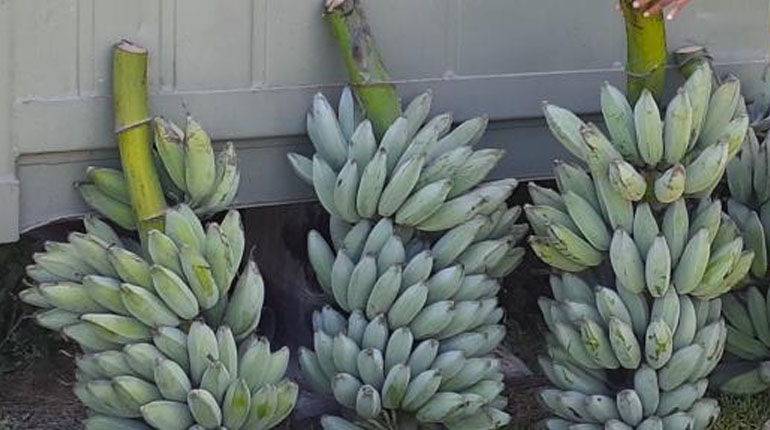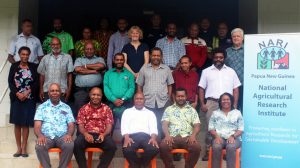The biotechnology team at NARI’s Momase Regional Centre went into the festive season in a jolly mood, after the first harvest of four tissue culture bananas in December 2020.
It was a big haul, much to the delight of Gou Rauka and her assistant Janiella Aidaboe, who spent several months understanding the concept of propagating bananas in tissue culture and the technique involved, before the 2cm tissue became a plantlet.
It took another seven months in the field under the Bubia conditions for the four out of 10 stems to mature and produce their first fruits.
The concept of establishing clean banana planting materials through tissue culture was proposed in 2018, after farmers in Markham District of Morobe province complained about their staple food crop, the Kalapua banana dying.
NARI was approached to identify what was affecting the Kalapua bananas. The concern was serious as kalapua is the staple food for most families in the area. A survey carried out confirmed that the Banana wilt associated phytoplasma (BWAP) was responsible. The phytoplasma or germ was transmitted by sap sucking insects and it affected mostly the Kalapua and Yawa (dessert) bananas, and not other cooking or dessert bananas.
While longer term research is required to understand the disease and the insects that are passing the disease to Kalapua bananas; a short-term assistance through clean tissue culture propagation of the planting material was the immediate relief.
Since 2019, initial work was carried out on a banana variety closely related to the Kalapua. The banana suckers went through a surface cleaning process using bleach mixed in water, before 2cm tissues were extracted from the meristem to grow in media inside the laboratory. Once the plantlets were established, they were planted in bags and kept in a nursery.
In May, 2020, 10 of these plants were planted at Bubia, while several were given to four communities around Mutzing in Markham and Zifasing in Wampar District for farmers to grow in their gardens. This was done to expose the tissue cultured banana plants to the disease infected areas to assess how long the plants can withstand infection. The team reported that so far, there has not been any infection.
Four of the 10 plants at the Bubia research station took about seven months to bear fruits and were harvested in December, 2020 and distributed to a few staff before they headed home for Christmas.
For this year, the biotech team will continue the work on making available cleaned banana suckers through tissue culture. This time they will be using kalapua plants that have been taken from infected sites in Markham. The plant will be grown in trial plots at Bubia and sites in Markham to observe disease reinfection rate and identify the insect or vectors that carry the disease to the bananas.
Clean planting materials is only a temporary measure for the affected people of Markham, as a more comprehensive approach including the study of the insect vector itself will be required to control or eradicate the problem.
For now, the Biotech team is inspired by the “2cm” banana tissues from the laboratory which has produced some of the cleanest plants, promising high yields in the farmers’ gardens.






